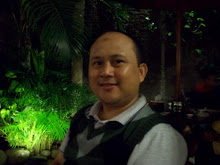In the wake of the Copenhagen UN Climate Talks last December, and the build up to this winter's gathering in Mexico, it is national donors, individual governments, the private sector and NGO's that are developing and pushing forward the forest carbon market in 2010. So far, this action has come from international cooperation and the voluntary market sector. Simultaneously, the first verified REDD+ type projects have begun to emerge.
REDD+ is a framework evolving through an international process, managed by the UN and World Bank, to compensate land owners, concessionaries and communities for avoiding deforestation and forest degradation over the long term. The acronym - Reduced Emissions from Deforestation and forest Degradation - is now on the lips of politicians from most developing world tropical forest countries.
Political support and offers of substantial finance for REDD+ projects was one of few positive outcomes from the Copenhagen Summit. This was followed up in Olso, last May, when 58 nations formed the REDD Partnership and six wealthy nations - including the UK - offered to inject $4.5 billion by the end of 2012.
Regions like South America, which has the largest area of tropical forest in the world, are not massive emitters of green house gases. As a continent which has tapped into its enormous potential for hydro electricity generation, over 40% of Latin American emissions come from deforestation and forest degradation rather than mining, industry or transport.
Norway's $1 billion pledge for REDD+ related work in Indonesia is the biggest single action this year. The World Bank's Forest Carbon Partnership Facility, established in 2008, helps to bring donors together with tropical forest nations, like Guyana, Costa Rica and Peru, initially funding the development of national REDD+ frameworks.
"It is at the level of projects on the ground - in the rainforest and with the communities who live there - that the real successes are to be found," claims Matthew Owen of Cool earth Action. "Our project with the Ashaninka communities in the Peruvian Amazon, for instance, has been conserving the forest for almost three years now, supported by private donations; the next step is to design and fund a REDD+ type project to take care of the Ashaninka forest and provide a sustainable income for the communities for the next 20 years. We expect to fund this with a combination of donations, private sector interest and international cooperation. It's important to adhere to international standards and methodologies - like Voluntary Carbon Standard (VCS) and Carbon, Community and Biodiversity Standard (CCBS) - but there's still huge pressure on the forest - from logging and agricultural clearance - so there's no time to hang around and wait for international consensus or a regulated forest carbon market."
Source: www.coolearth.org

No comments:
Post a Comment